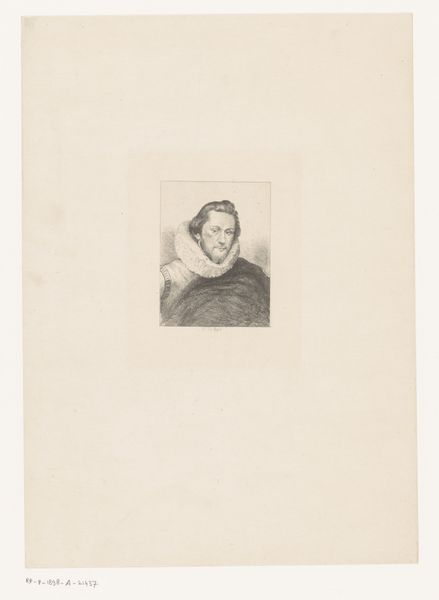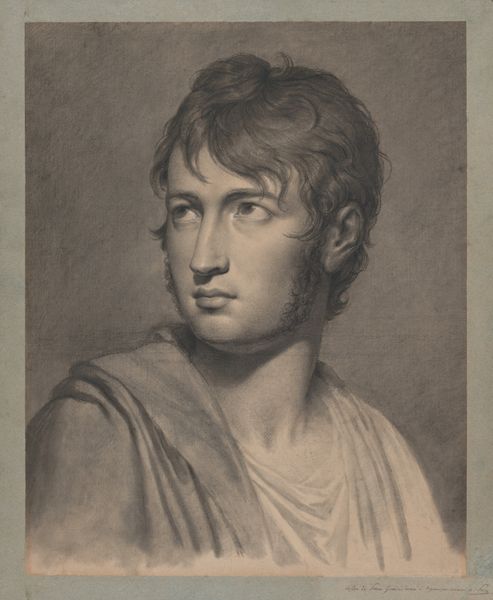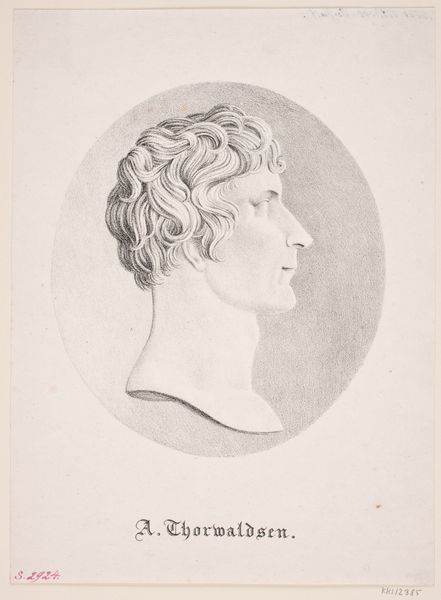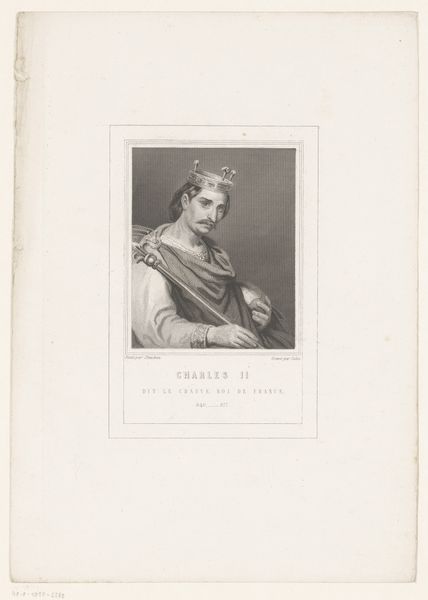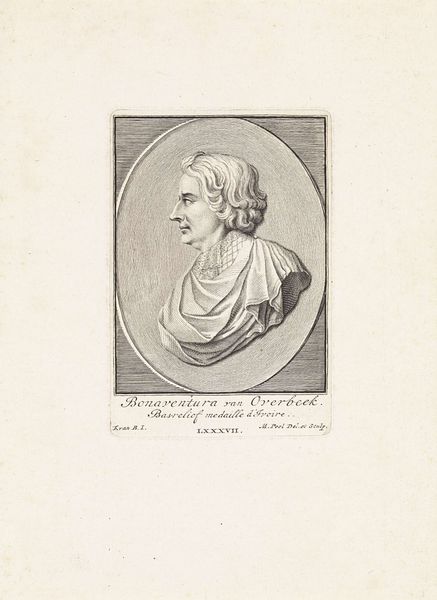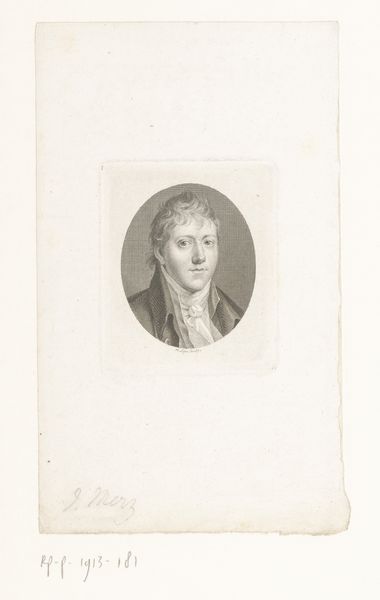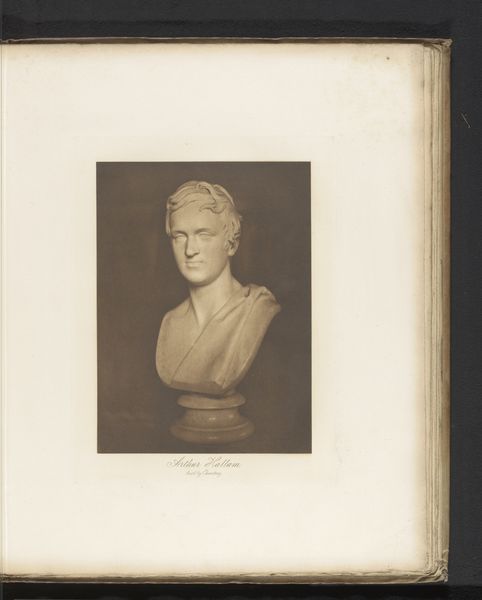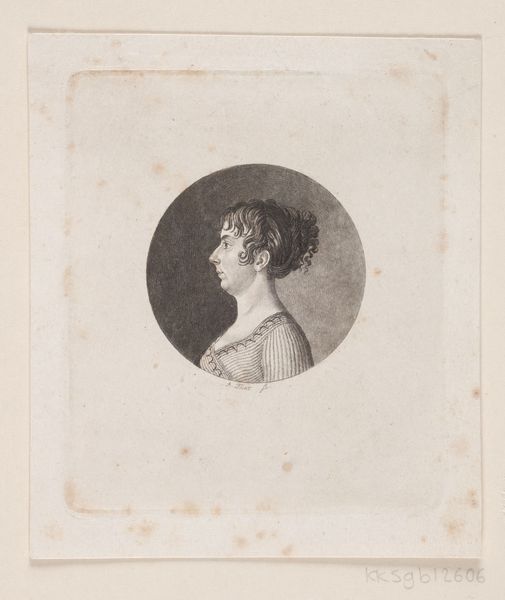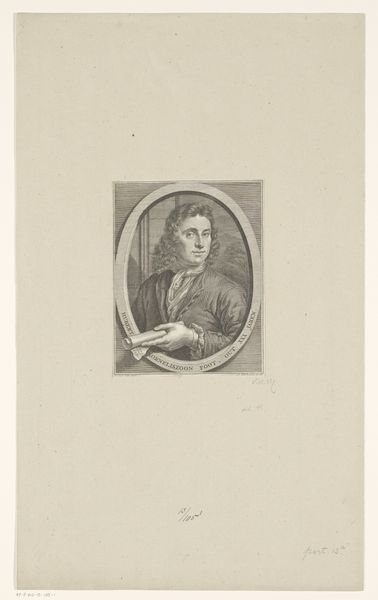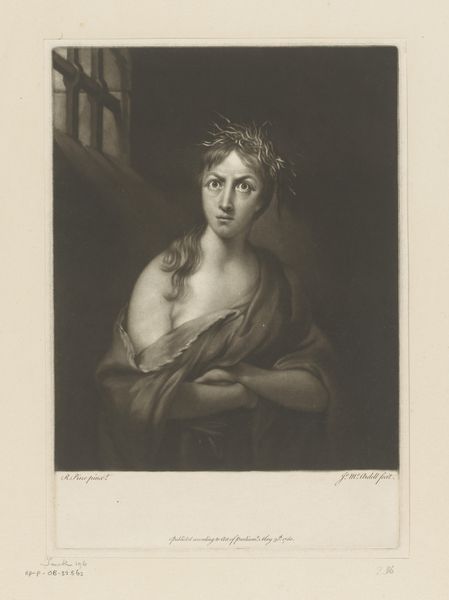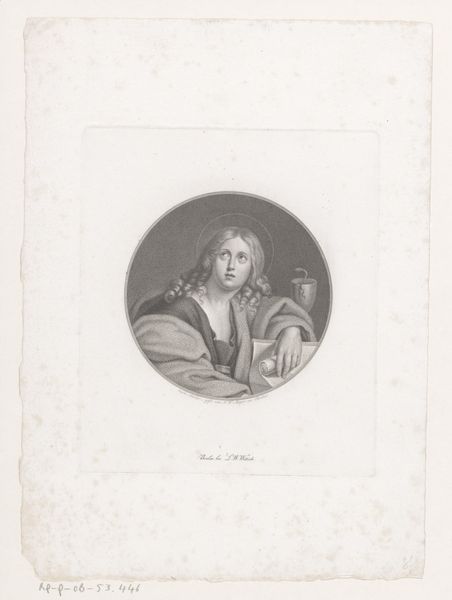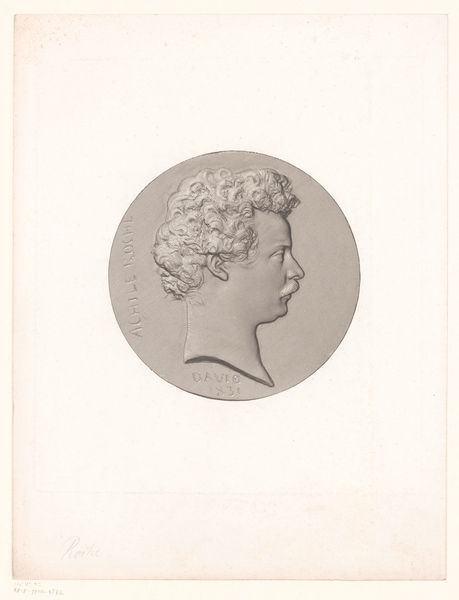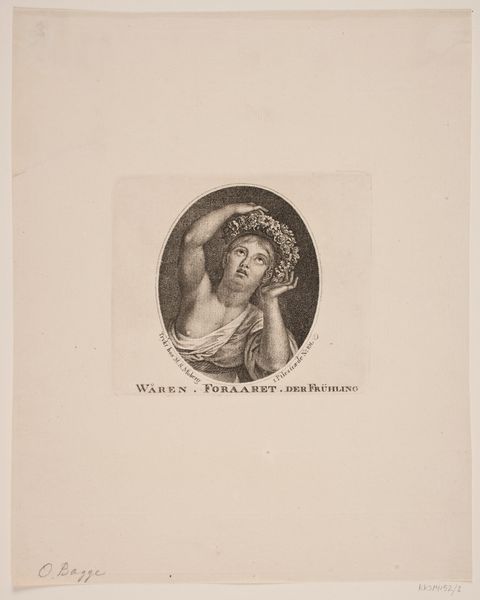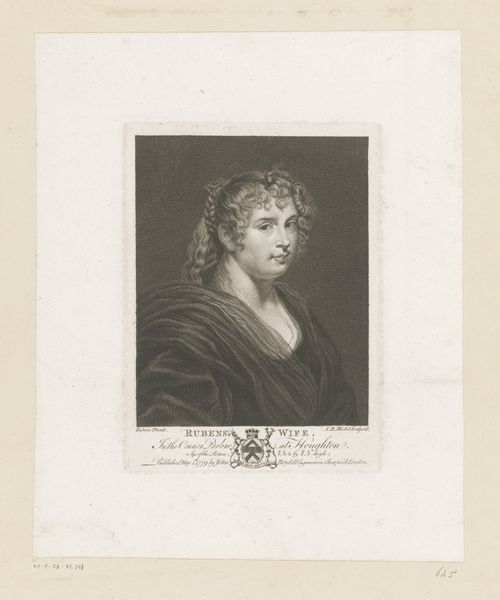
drawing, print, graphite, engraving
#
portrait
#
drawing
# print
#
graphite
#
tonal art
#
engraving
Dimensions: height 446 mm, width 314 mm
Copyright: Rijks Museum: Open Domain
Editor: Here we have "Buste van een jongeman," or "Bust of a Young Man," an engraving and graphite drawing by Adolf Carel Nunnink, created sometime between 1856 and 1867. The young man has a slightly melancholy gaze; it gives off a very romantic feeling. How do you see this portrait reflecting its historical context? Curator: Considering this work through a historical lens, it’s interesting to note the rise of portraiture amongst the middle class in the 19th century. Do you think this work would have been commissioned, or perhaps made as part of an artist's broader exploration of the human form? Was this meant to immortalize an individual or serve a broader purpose within artistic circles? Editor: That’s a great question. Given that it's a print, wouldn't that make it easier to distribute, implying a broader public function? Curator: Exactly. Prints democratized art. Also, consider the social context of male portraiture at the time. Often these depictions served not only as likenesses but as statements of status and perhaps even political leanings, however subtle. Given his relatively plain dress, I don't know if it would fit into that category though. What do you make of the scale and tonality of the image? How do they affect your experience? Editor: It's pretty small and has limited shading so my impression is not a portrait for status, and more for wider circulation, a kind of relatable everyday man, to influence others? Curator: An astute observation. By focusing on these distribution networks and the types of imagery that circulated, we gain a deeper understanding of its purpose. This piece might give us insight into the evolving social function of art during this period. Editor: Thanks, I never considered printmaking’s democratizing effect. That adds another layer to understanding its role within society.
Comments
No comments
Be the first to comment and join the conversation on the ultimate creative platform.
